The use of different soil amendments is one of the main ingredients that contribute to healthy and fast growing plants. Among these, magnesium sulfate otherwise known as Epsom salt has been found useful in gardening. This article aims at providing an inclusive analysis about Epsom salts manifold uses in plant care with emphasis on its mechanisms of action, specific applications and scientific principles behind its efficacy. Our exploration from aiding nutrient uptake, increasing seed germination to repelling pests using the Epsom salt will arm gardeners and horticulturists with details and practical methods of introducing this compound to their plant care practices. When a combination of empirical evidence and practical skills are used, readers will gain information that will enable them understand how they can use Epsom salt for healthier plants which are also tougher.
What is Epsom Salt and How Does It Benefit Plants?
Epsom salt is also known as magnesium sulfate, and it contains oxygen, sulphur, and magnesium. Magnesium is crucial for chlorophyll’s synthesis in the plant which promotes vegetative growth by enhancing photosynthesis. On the other hand, certain amino acids and vitamins that assist in plant growth contain sulphur. Under correct application techniques, Epsom salts can boost nutrient uptake leading to greener leaves and stronger plants. Furthermore, it might help seeds sprout faster while increasing nitrogen and phosphorous absorption besides being an efficient slug/ vole repellent among others pests since it is a versatile product used in numerous horticultural practices.
What is Epsom Salt?
Magnesium sulfate, commonly called Epsom salt (MgSO₄·7H₂O), comprises magnesium, sulfur and oxygen atoms. Approximately 9.8% of a molecule of Epsom salt consists of magnesium; conversely sulfur accounts for almost 13% by mass in every molecule of Epsom salt. Photosynthesis requires chlorophyll molecules that contained magnesium as their constituent parts; This means that the amount of energy given out by a plant will depend on availability of magnesium as this mineral plays a critical role in photosynthesis process hence affecting its ability to convert sunlight to energy. Sulfur helps synthesize specific amino acids like methionine or cysteine besides vitamins or enzymes needed during plant growth development stages. The use of Epsom salts has shown improvements in nutrient uptake during fertilization processes seed germination rates enhancement along with optimal nitrogen/phosphorus uptake based on empirical studies conducted at different places around the world to ascertain healthy crops production through enough supply nutrients using appropriate methods such like soil drenching foliar sprays which varies from 1-2 tablespoons per gallon water.
How Does Magnesium Sulfate Benefit Plant Growth?
The plant’s growth is enhanced through various ways by magnesium sulfate. Firstly, magnesium is a component of chlorophyll, the pigment that allows photosynthesis in plants. By doing this, magnesium helps plants to be able to change sunlight into food. The recommended dosage for soil or foliar application generally falls between 1 to 2 tablespoons per gallon of water, aligning with empirical studies showing optimal nutrient uptake and photosynthesis efficiency.
Secondly, the sulfur in magnesium sulfate is crucial for the synthesis of amino acids such as cysteine and methionine, as well as essential vitamins and enzymes. This improves overall protein synthesis and metabolic functions within the plant. Technical parameters suggest that while magnesium comprises approximately 9.8% of Epsom salt by mass, sulfur makes up about 13%, providing a balanced nutrient profile.
In addition, there are several other nutrients like nitrogen and phosphorus whose absorption can be increased when mgso4 added to the system hence leading to more active plant growth which includes quicker germination rates protection against pests such as slugs and voles; MgSO4 has been tested in many horticultural environments because of its multidimensional use.
Why is Epsom Salt Good for Plants?
The chemical name for Epsom Salt is Magnesium Sulfate (MgSO₄·7H₂O), providing an excellent combination of vital nutrients to plants. The main reasons why it has significant effects are due to its sulphur and magnesium components. For instance, being an important element in chlorophyll molecules used during photosynthesis process makes available energy from sunlight crucially dependent on magnesium content in a given plant since it plays multiple roles during this process thus affecting how much energy could be produced by a particular organism using means other than food chain interaction due lack enough nutrients required maintain normal metabolic activities or synthesize proteins necessary grow higher organisms like humans animals fungi bacteria virus etc.. Sulfur is also important for the production of certain amino acids like methionine or cysteine which are used in building blocks proteins and enzymes that regulate biochemical processes within living cells.
Epsom salt, technically speaking, contains typically magnesium 9.8% and sulfur 13% by mass that makes it a balanced nutrient profile. Optimal application of Epsom salt is around recommended to be between 1 to 2 tablespoons for every gallon of water used in irrigating soil as well as foliar feeding to enhance proper absorption of nutrients and increase plant vigor. Additionally, scientific research has revealed the ability of magnesium sulfate to improve uptake of other nutrients including nitrogen and phosphorous which promote better germination rates, faster growth rates and some resistance against certain pests like slugs and voles. These myriad advantages highlight the diverse uses and importance of Epsom salts in contemporary horticulture.
How to Apply Epsom Salt in the Garden
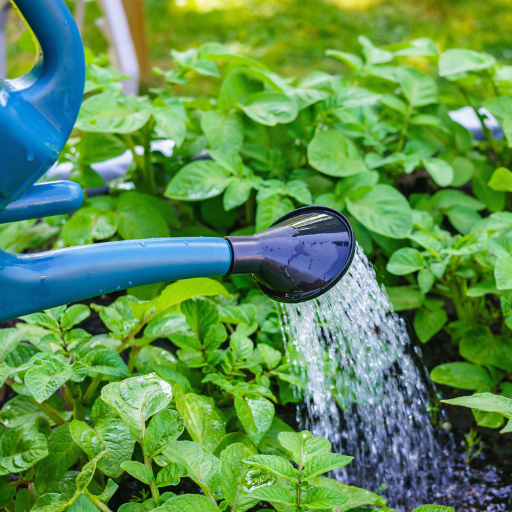
When using Epsom salt in the garden, you should dilute 1-2 tablespoons of Epsom salt in one gallon of water. This solution can be employed as a soil drench or foliar spray that will encourage efficient absorption of the nutrients by plants. If used as a soil drench, pour the solution directly at the base of the plants every two to four weeks during their growing season. You can apply this solution on the leaves by spraying it for quick uptake through foliage. It is good to do it early mornings or late afternoons so that sun does not cause leaf burns. Application of Epsom salt through this means enhances plant health and strength.
How Much Epsom Salt Should I Use?
The required quantity varies depending on what kind of plants you are growing and how much magnesium it needs. Normally, 1 tablespoon per gallon will suffice for general use in a garden. However, when it comes to tomatoes and peppers that demand more magnesium, using 2 tablespoons per gallon may be advantageous. Nonetheless, applying too much salt can result in an imbalance of soil nutrients which could be harmful. As a result, according the observed plant health and growth over time apply Epsom salt every two-four weeks with that regard.
Ways to Use Epsom Salt as a Foliar Spray
Epsom salt can also be used for foliar application where specific nutrient deficiencies have been identified and improved overall plant health is involved. To start with, dissolve between one and two tablespoons of Epsom salts into a gallon container full of water. This mixture can then be applied using a garden sprayer or handheld spray bottle, just like any other mixture known there from time immemorial. It’s better if this happens either at sunrise or sunset to avoid heat burning leaf out.
Moreover, several plants—such as peppers, tomatoes, and roses—benefit significantly from Epsom salt sprays because they require a lot of magnesium. To enhance their growth and flowering, 2 tablespoons per gallon of water can be used for these plants, while one tablespoon per gallon is normal for all other types of plants.
Apply this foliar spray evenly to ensure that every leaf is properly covered. Rapid absorption through the leaves’ stomata relieves magnesium deficiencies quickly. Also, remember that the underside of leaves is more efficient when spraying.
According to various horticultural resources, regular foliar applications throughout the growing season will produce much healthier and stronger plants. However, close follow-up and monitoring must be done to avoid over-application, which can result in nutrient imbalances. These adjustments toward maintaining optimal plant health include observing plant responses, such as adjusting the frequency and concentration of foliar spray where necessary.
How Often Should I Add Epsom Salt?
The specific needs of a particular crop should be considered when determining how often one should add this mineral to get optimum yields from such crops. Research at leading horticultural sources like the University of Massachusetts Amherst reveals that for many garden plants, monthly application of Epsom salt will suffice. Specifically, 1 tablespoon per gallon formula dissolved in water can be applied either to soil or as a foliar spray using this solution.
The National Gardening Association recommends that magnesium-demanding plants such as roses, peppers, and tomatoes be given a bi-weekly foliar spray of 2 tablespoons of Epsom salt dissolved in one gallon of water to significantly promote growth and yields.
In addition, the Royal Horticultural Society recommends that Epsom salt be applied at a rate of 1 tablespoon per gallon of water once every 4 to 6 weeks for routine garden maintenance. Monitoring plant health and soil magnesium levels is important so that overenthusiasm does not set in, leading to nutrient imbalance. Always adjust the rate depending on the response of plants and environmental conditions for best results.
Using Epsom Salt for Specific Plants
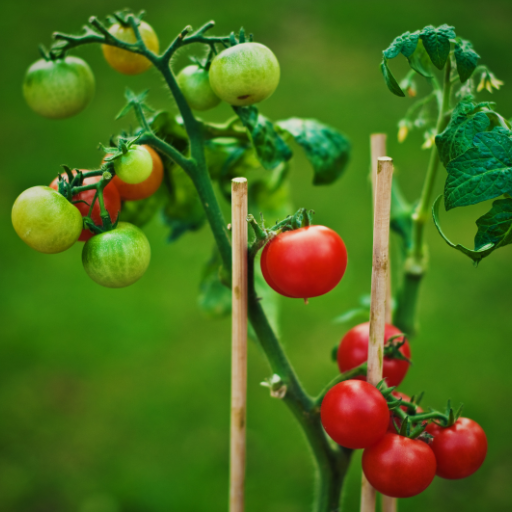
Epsom salt can be very advantageous in tomatoes due to their high demand for magnesium. It is suggested that Epsom salt be used as a foliar spray at the rate of 1 tablespoon per gallon of water every fortnight. This will help to avoid blossom end rot and also enhance better growth.
Additionally, roses, which are also heavy feeders, benefit from increased application of Epsom salts. Using a bi-weekly foliar spray or soil drench with 1 tablespoon per gallon of water ensures strong flowering and vibrant foliage. Many gardeners notice improved coloration and enhanced flower numbers through this method.
Like tomatoes, peppers can benefit from Epsom salts applied as a foliar spray every two weeks at a rate of 1 tablespoon per gallon of water to tackle common magnesium deficiencies and promote overall plant health and productivity.
Cucumbers usually flourish with the monthly addition of Epsom salt at a concentration of 1 tablespoon per gallon of water. This helps to keep their leaves green and healthy while supporting fruiting.
Lastly, for flowering plants such as azaleas and rhododendrons, it is recommended that they receive a monthly foliar spray using one tablespoonful of Epsom Salt per gallon of water to give forth robust blooms with lush foliage.
Benefits Derived from Using Epsom Salt on Tomato Plants
Epsom salt has several advantages when used on tomato plants. Firstly, it acts against low magnesium levels, which are often associated with growing tomatoes. Magnesium is an essential element present in chlorophyll, ensuring efficient photosynthesis, resulting in greener leaves, among other growth improvements.
Secondly, applying Epsom salts can prevent blossom end rot, which is commonly caused by calcium deficiency but worsened by imbalanced magnesium quantities. By maintaining optimum amounts of magnesium, calcium is better absorbed, thus reducing this condition.
Lastly, Epsom salt increases the uptake of phosphorus, which is necessary for strong root development and fruit production. The recommended application rate involves dissolving one table spoonful of Epsom Salt in one gallon of water and applying it as a foliar spray every two weeks. In this way, magnesium will be continuously supplied to tomato plants, helping them grow better and produce more fruit.
How Epsom Salt Helps Pepper Plants
Epsom salt has significant implications for pepper plants in terms of correcting nutrient deficiencies and overall plant health improvement. Plants require magnesium during photosynthesis, whereby its deficiency leads to yellowing leaves and poor fruiting. Therefore, By applying Epsom salts, pepper plants get the necessary magnesium to have healthy green foliage and good photosynthetic activities.
Technically speaking 1 tablespoon of Epsom salt into a gallon of water should be dissolved as prescribed by these instructions. This solution may simply be sprayed on the leaves or applied at the ground level. For foliar spraying, it is best to mist the crops once every fortnight to ensure uniform absorption through their leaves. However, if soil application is preferred, then watering with this solution should happen after every four weeks so that reasonable amounts of magnesium are maintained within the tissues.
It also helps photosynthesis and improves magnesium and sulfur absorption efficiency, thus facilitating nutrient uptake. This benefit allows the pepper plants to freely access other necessary nutrients like nitrogen, phosphorus, and potassium, improving their growth and fruiting. Growing healthy and productive pepper plants all season requires regularly using Epsom salt.
Can You Use Epsom Salt On Roses?
The use of Epsom salt is an excellent idea for rose bushes since it provides them with a necessary amount of magnesium which is one of the components forming chlorophyll. It makes leaves this way greener resulting in better photosynthesis that enables roses to take up nutrients more efficiently. One can apply Epsom salt on roses by dissolving 1 tablespoonful of Epsom salt in a gallon of water then add the mixture to the soil or use it as foliar spray. Normal application usually after every four weeks encourages vibrant growth, bigger blooms, and generally strong plants. Frequent usage ensures continuous productive outcomes by helping prevent nutritional deficiencies while supporting ideal plant health and blooming potential.
General Gardening Tips for Using Epsom Salt
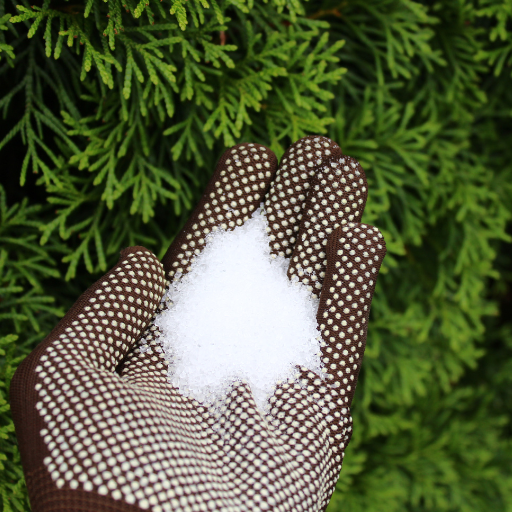
Epsom salt, which is mostly made up of magnesium sulfate, is preferred for its adaptability and simplicity of use in gardening. For most plants, add Epsom salt to the soil when you are planting to improve root establishment and growth. Furthermore, a foliar spray can be made by dissolving one tablespoon of Epsom salt in a gallon of water applied biweekly for ongoing care. This will enable your plants have lush green foliage and prevents them from getting magnesium deficiency. In addition, household plants can maintain their nutrient balance and overall plant health by adding Epsom salt on regular intervals into the soil. It’s important not to overdo it since an excessive amount of magnesium will disrupt the nutrient balance in the soil.
Common Errors When Applying Epsom Salt
Applying too much Epsom salt is one common mistake people do when using it which could lead to excess magnesium content in soils that may cause unbalanced minerals in the soil. Over applying it disrupts essential nutrient absorption like calcium and potassium that are vital for good plant health and growth. Another recurring mistake is wrong timing or application means since putting it during severe weather conditions might prove futile. It is advised that once first signs appear (spring or when plants show signs of needing magnesium), apply some Epsom salt around them earliest before they grow into full plants. Misunderstanding what a particular plant needs is another often overlooked factor; while this helps alleviate symptoms in plants experiencing lack of magnesium, applying without need may be detrimental on other non-magnesium deficit ones. Proper testing should always be done before application so as to ascertain how much Magnesium present is correct thus avoiding any harm rather than optimizing plant health.
Best Practices When Using Epsom Salt In Gardening
To make sure its efficiency increases while potential risks remain at bay, several guidelines must be followed while using epsom salts for gardening purposes. First, always conduct a soil test to determine the existing magnesium levels, thus ensuring that Epsom salt application is necessary. In many cases, it is recommended that 1 tablespoon of Epsom salt should be mixed in a gallon of water for foliar application and applied bi-weekly during the growing season. For soil application, 1-2 tablespoons of Epsom salt can be mixed into each square foot of it before planting for vegetables like tomatoes, peppers and roses which are known to require extra magnesium.
Timing of application is equally critical. It’s advisable to use epsom salt early in the morning or late at night so as to prevent leaf burn caused by direct sunlight. During drought conditions or extreme weather events, avoid applying it further stress on plants is not desirable. If overused, this will result in nutrient imbalance in addition to other forms of effects peculiar with excess applications. Based on symptoms seen from plants such as yellowing leaves and stunted growth.
Finally, one must take plant-specific measures when utilizing Epsom salts. While some may have an affinity for the mineral Magnesium, others without any deficiency might suffer from imbalanced nutrients if they are used unnecessarily, leading to poor yield. Hence, site-specific adjustments based on soil type and plant requirements become vital for the best gardening outcome.
How to Mix and Dilute Epsom Salt Solutions
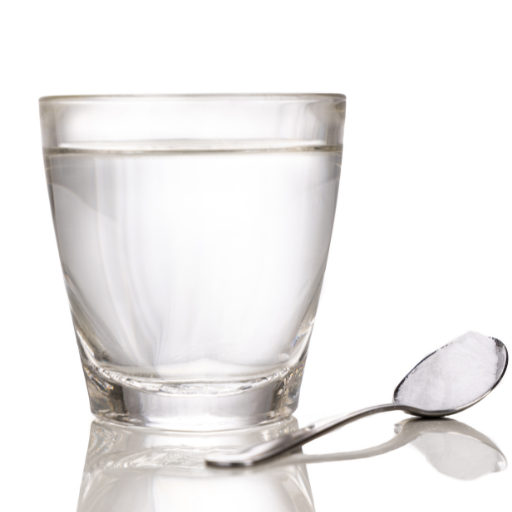
To dilute and mix Epsom salt solutions, start by filling a container with water in the right measure. In order to make a general purpose solution, dissolve 1 tablespoon of Epsom salt per gallon of water. Stir the mixture until all the epsom salts have dissolved fully. It can be used as both foliar sprays and soil applications. When preparing a highly concentrated solution to address severe magnesium deficiency, you may raise the concentration of epsom salt to 2 tablespoons per gallon of water. Always ensure that the salt is completely dissolved so as not to clog nozzle spray and have uneven distribution on the soil.
How Many Tablespoons of Epsom Salt Per Gallon of Water?
For most plants, one tablespoon of Epsom salts is needed for standard mixtures for every gallon of water at hand. This ratio ensures that all aspects are balanced resulting in enhanced plant growth addressing small-scale magnesium deficiencies. On situations where there is severe magnesium deficiency, one can use more concentrated solutions under such ratios as two tablespoons per gallon of clean water that has no additives. Before spraying it out when this technique is applied on contaminated lands that carry some other plants growing together with our main crop, it should be considered whether or not these ones need more nutrients besides Magnesium.
Steps to Make an Epsom Salt Solution
- Determine what you want: Establish if your Epsom salt solution will deal with general plant maintenance or particular nutrient deficits within your crops.
- Choose a Container: Choose a clean container big enough to hold the quantity required for each batch prepared; For larger quantities apply through garden sprinkler or watering can.
- Measure out Epsom Salt: Measure 1 tablespoonfuls in case you are doing it for general purposes, while measuring up to two tablespoons will work when dealing with cases involving severe shortages of magnesium elements from bodies (plants) known as leaves or roots, which causes them to wither. A good supply of water is, therefore, essential in ensuring that the salt dissolves efficiently.
- Put Water in the Containing Device: Use enough water to fill the container for the number of gallons you will make. While doing this, pour Epsom salts into lukewarm water so that they dissolve more readily.
- Dissolve the Epsom Salt: Go on pouring measured amounts of Epsom salt into water stirring continuously in order to ensure that all particles dissolve completely, since if not, they might block spray nozzles and result in uneven application.
- Mix Thoroughly: The solution should appear clear and completely granulated so keep mixing it until epsom salt disappears entirely.
- Method of Application: Finally, select whether to use your Epsom Salt Solution in foliar sprays or soil drenching. For foliar sprays, this can be decanted into a spray bottle or applied using a garden sprayer. However, it can be poured around plant roots when applied directly onto soils surrounding the laying ground bases where these plants grow.
- Application Rate and Frequency: Apply general-purpose solution every 4-6 weeks during the growing season. Concentrated solutions for severe deficiencies should be used carefully, limiting their applications to once every 6 weeks, to avoid imbalances between nutrient levels, among other things.
How to Ensure Proper Nutrient Absorption
Ensuring proper nutrient absorption involves several key practices to optimize soil health and plant uptake efficiency. First, keep soil pH balanced; most plants require a slightly acidic to neutral pH range (6.0-7.0). By regularly checking out the soils, they will be adjusted with lime or sulphur for increasing or decreasing the pH respectively. Second, incorporate organic matter such as compost or well-decomposed manure into the soil structure to improve it as well as retain water and nutrients in it. Third, use crop rotation and polyculture methods that enhance soil fertility while minimizing pest buildup. Finally, water efficiently; there can be over watering leading to leaching of nutrients or low watering leading to unavailability of nutrients Utilize of mulch is important in maintaining uniform soil moisture content and temperature which help increase nutrient efficiency.
Is Epsom Salt Good for All Types of Plants?
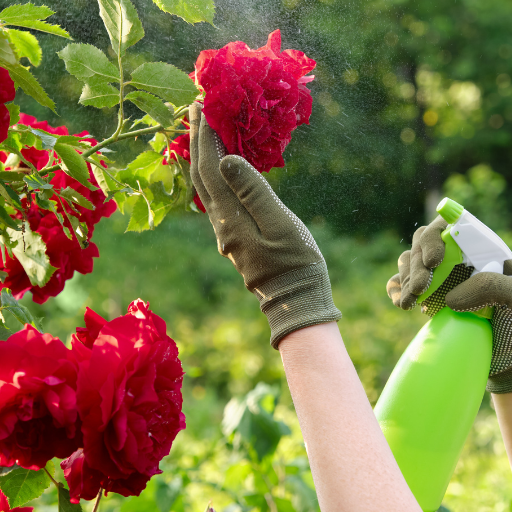
For a variety of plants especially tomatoes, peppers and roses that require high magnesium levels, Epsom salt (magnesium sulfate) usually benefits them. However, it is not universally beneficial for all plant types. Overuse or misapplication can result in nutrient imbalances that can harm plants like those without magnesium deficiencies. A soil test should be conducted before application to determine if magnesium supplementation is needed. In general, although Epsom salt can boost plant growth and flowering in some instances, its advantages are largely determined by the kind of plant and the soil conditions.
Is Epsom Salt Effective for Flowering Plants like Roses?
Epsom salt has been seen as effective for flowering plants such as roses when properly used. It has also been argued that several sources claim that magnesium sulphate contained in Epsom salt helps to raise chlorophyll production which leads to stronger flowers and healthier plants. High chlorophyll levels enhance photosynthesis, contributing to better growth and blossoming.
Application wise, recommended amounts are generally around 1 tablespoon of Epsom salt per gallon of water applied either as a foliar spray or directly on the soil surrounding the base of the plant every two to four weeks during the growing season. Technical parameters include keeping rose’s soil pH within the optimum range (usually 6.0-6.5) and testing for existing magnesium levels via soil tests prior to any treatment. Consequently, excess use or misuse may lead to nutrient imbalances hence specific needs of various plants have to be put into consideration before applying Epsom salts onto soils.
Should Epsom Salt be Used for Houseplants?
Using Epsom salt for houseplants can have positive effects but must be done carefully. One major component, magnesium sulfate addresses such deficiencies among some houseplants thereby advancing better nutrient absorption facilitating better growth rates. However, it is crucial first to confirm any deficiency through soil testing because unnecessary application can result in nutrient imbalances or even toxicity. For houseplants, dissolve two tablespoons of Epsom salt in a gallon of water and use this solution once a month. This should be tailored to the specific needs of the plant species and the existing soil conditions to avoid over-fertilization. Therefore, while Epsom salt can be a helpful supplement, its use should be carefully managed.
Frequently Asked Questions (FAQs)
Q: What is Epsom salt and how does it benefit plants?
A: Epsom salt, which is magnesium sulfate, enriches the soil with magnesium and sulfur, key nutrients that support plant growth, root development, and overall health. Using epsom salt for plants can help them absorb more nutrients and grow bushier.
Q: How often should I use Epsom salt for plants?
A: The frequency of using Epsom salt for plants varies. Generally, it can be applied once a month. For a vegetable garden, you can add one tablespoon of Epsom salt per foot of plant height into the soil or mix it with water and spray.
Q: How do I apply Epsom salt on plants?
A: You can apply Epsom salt on plants in several ways. Mix one tablespoon or two tablespoons per gallon of water and spray it directly on the foliage. Alternatively, you can sprinkle a cup of Epsom salt around the base of each plant and water first.
Q: Can I use Epsom salts as a fertilizer for plants?
A: Yes, Epsom salts can act as a supplemental fertilizer for plants by providing magnesium and sulfate. However, Epsom salts do not contain the primary nutrients found in commercial fertilizers, so they should not be the sole source of nutrition for plants.
Q: Are there specific plants that benefit the most from Epsom salt?
A: Many plants, especially roses, tomatoes, and peppers, benefit significantly from the use of Epsom salt. It supports better fruiting, blooming, and overall growth, helping plants grow healthier and more productive.
Q: Can overuse of Epsom salt harm my plants?
A: While adding Epsom salt to plants can be beneficial, overuse may lead to an imbalance of nutrients in the soil over time. It is crucial to follow recommended dosages—typically one tablespoon per plant per month or two tablespoons per gallon of water and spray once a month.
Q: Does Epsom salt improve root growth?
A: Yes, Epsom salt supports root growth by providing magnesium, which helps plants absorb key nutrients more efficiently. Strong root systems are crucial for healthy, thriving plants.
Q: Can Epsom salt be used for indoor plants?
A: Yes, you can use Epsom salt for indoor plants. For indoor use, apply a diluted solution of one tablespoon of Epsom salt per gallon of water and spray it on the foliage or add it to the soil around the base of the plant periodically.






